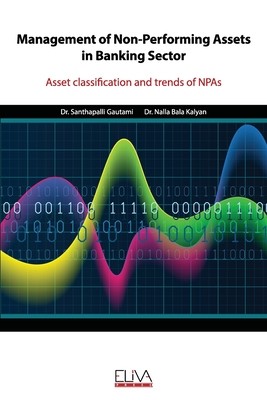
- We will send in 10–14 business days.
- Author: Nalla Bala Kalyan
- Publisher: Eliva Press
- ISBN-10: 997534111X
- ISBN-13: 9789975341110
- Format: 15.2 x 22.9 x 0.6 cm, softcover
- Language: English
- SAVE -10% with code: EXTRA
Management of Non-Performing Assets in Banking Sector (e-book) (used book) | bookbook.eu
Reviews
Description
An asset of a bank (such as a loan given by the bank) turns into a Nonperforming asset (NPA) when it ceases to generate regular income such as interest etc for the bank. In other words, when a bank which lends a loan does not get back its principal and interest on time, the loan is said to have turned into an NPA. While NPAs are a natural fall-out of undertaking banking business and hence cannot be completely avoided, high levels of NPAs can severely erode the bank's profits, its capital and ultimately its ability to lend further funds to potential borrowers. Similarly, at the macro level, a high level of Nonperforming Assets means choking off credit to potential borrowers, thus lowering capital formation and economic activity. So the challenge is to keep the growth of NPAs under control. Clearly, it is important to have a robust appraisal of loans, which can reduce the chances of loan turning into an NPA. Also, once a loan starts facing difficulties, it is important for the bank to take remedial action. The study focus on Asset classification and trends of NPAs, compare sector wise NPAs during branch expansion, predict and analyze NPAs by Markov's transition matrix and its application to loan tracking, impact of NPAs on the profitability and productivity of banks, Recovery methods, loan administration activities and factors influencing NPAs from Banker's & Borrower's perspective in selected banks.
EXTRA 10 % discount with code: EXTRA
The promotion ends in 20d.00:15:53
The discount code is valid when purchasing from 10 €. Discounts do not stack.
- Author: Nalla Bala Kalyan
- Publisher: Eliva Press
- ISBN-10: 997534111X
- ISBN-13: 9789975341110
- Format: 15.2 x 22.9 x 0.6 cm, softcover
- Language: English English
An asset of a bank (such as a loan given by the bank) turns into a Nonperforming asset (NPA) when it ceases to generate regular income such as interest etc for the bank. In other words, when a bank which lends a loan does not get back its principal and interest on time, the loan is said to have turned into an NPA. While NPAs are a natural fall-out of undertaking banking business and hence cannot be completely avoided, high levels of NPAs can severely erode the bank's profits, its capital and ultimately its ability to lend further funds to potential borrowers. Similarly, at the macro level, a high level of Nonperforming Assets means choking off credit to potential borrowers, thus lowering capital formation and economic activity. So the challenge is to keep the growth of NPAs under control. Clearly, it is important to have a robust appraisal of loans, which can reduce the chances of loan turning into an NPA. Also, once a loan starts facing difficulties, it is important for the bank to take remedial action. The study focus on Asset classification and trends of NPAs, compare sector wise NPAs during branch expansion, predict and analyze NPAs by Markov's transition matrix and its application to loan tracking, impact of NPAs on the profitability and productivity of banks, Recovery methods, loan administration activities and factors influencing NPAs from Banker's & Borrower's perspective in selected banks.


Reviews